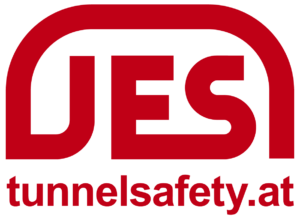JES equipped longest road tunnel in Brazil.
Rodovia dos Tamoios: 700 meters altitude down to the Atlantic coast of Brazil.
On March 26, 2022, the country’s longest road tunnel was inaugurated in Brazil. The who-is-who of political representatives from the Sao Paolo region was represented when the 22 km long connection between Sao José dos Campos and Caraguatatuba was opened. Consisting of eight viaducts, a bridge and 4 tunnels, which together have a length of 12.8 km, a new standard in the history of road tunnels was created for Brazil. This applies not only to the length of “Tunnel 4″ of the tunnel chain (tunnel sections 3 and 4 form a common tunnel) with a length of 5,555 m, but also to the electrotechnical safety and control architecture for sustainable, safe and energy-efficient tunnel operation.
Rodovia dos Tamoios, as the section is called, bridges an altitude difference of about 700 m on the last few kilometers to the coast, with gradients of up to 5 %. Here in particular, the laying of the roads underground was particularly important. The traffic route through an environmental protection area required special consideration for the protection of nature, and the risk of seasonal landslides during the rainy season played a major role for planning of the road layout.
“This section represents the most demanding, costly and well-executed engineering work in Brazilian road history. There are areas here in the Serra do Mar that remain completely untouched because they were built with international technology that avoids environmental damage,” emphasized the Governor of the Sao Paolo region, Joao Doria.
The first planning and concepts for connecting the important port of Sao Sebastiao to the interior of the country began 20 years ago. The transport connection affects 3.3 million people in the immediate coastal region, whose travel time in the area of the new connection has now been reduced by almost half.
Queiros Galvao founded a separate companyfor the planning, construction and operation, which, once construction has been completed, is to ensure thirty years of tunnel operation economically and technically. Due to the conceptual combination of construction and operation, great importance was attached to cost-effective operation in the sense of a long-term overall calculation.
JES tunnel sensors should ensure this over the entire term. In addition to monitoring the air quality (visibility, CO, NO2), the tunnel lighting in particular is controlled with maximum efficiency using luminance meters.
Since the volume of traffic on the route with four tunnels T1 (2982 m), T2 (714 m), T3/4 (5555 m) and T5 (3699 m) is temporarily very different, the tunnel lighting can be reduced down to 20 % at low traffic loads. The savings in operating costs are correspondingly high, which are particularly important for the operator due to the seasonal electricity prices. While relatively cheap electricity is available in the rainy season through the use of hydropower, expensive power plant electricity has to be used in the dry season. For an overall calculation over a 30-year operating period, an investment in energy-efficient tunnel lighting based on luminance measurement is quite worthwhile. With the increase in energy prices as well as the growing concern for environmental protection, the use of JES technology should also be increasingly considered in Brazilian tunnel equipment planning in the future.
Tunnel consultant Ricardo Miranda Rodrigues, who, together with DURAG Siena do Brasil and JES, planned and implemented the actual implementation of the JES equipment, is already reporting on the follow-up project “Contornos”, which follows the now completed “Rodovia dos Tamoios”. It is to connect the coastal towns with its own bypass road and 5 further tunnel sections. With the constant improvement and further development of the JES measurement technology, JES is also recommended here as a reliable partner for safe, intelligent, sustainable and therefore also cost-effective tunnel operation.
After commissioning and extensive safety checks (fire/cold smoke/hot smoke) in February 2022, the Tunnels da Tamoios will initially be operated in an assisted manner until mid-June. Now the automated full operation has started – low-maintenance and low-cost for the tunnel operator and with JES equipment for at least 30 years and probably beyond…
JES tunnel equipment:
Anemometer 1D
Further information:
































